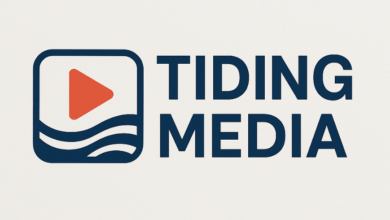Big Data & Data Lakes: The New Age of Competitive Intelligence

In today’s hyper-connected, data-driven world, competitive advantage is no longer built solely on traditional strategies or industry expertise. It’s increasingly defined by how effectively a company can collect, manage, and interpret massive volumes of data to anticipate moves, respond to trends, and outmaneuver rivals. Enter the world of Data Lakes and Big Data, the new powerhouses of Competitive Intelligence (CI).
The Evolution of Competitive Intelligence
Traditionally, CI was rooted in methods like market surveys, financial analysis, and monitoring public sources or competitor press releases. While still useful, these approaches often offer delayed or incomplete insights. In contrast, the rise of big data technologies has redefined CI—shifting it from a reactive practice to a proactive, predictive discipline.
Today, organizations tap into real-time streams of structured and unstructured data to uncover competitor strategies, identify market opportunities, and monitor customer sentiment at scale. The foundation of this transformation? Data lakes.
What is a Data Lake?
A data lake is a centralized repository that stores raw data in its native format—structured, semi-structured, or unstructured. Unlike traditional databases or data warehouses, data lakes allow organizations to store everything from clickstream logs and social media feeds to IoT sensor data and transactional records, all without upfront schema requirements.
This flexibility makes data lakes ideal for organizations seeking to harness diverse data sources to power advanced analytics, machine learning, and ultimately, more sophisticated CI strategies.
Big Data’s Role in Modern Competitive Intelligence
Big data, when paired with robust analytics tools and data science, allows companies to:
- Track competitor digital footprints: Monitor website changes, job postings, patent filings, ad spend, and product updates.
- Analyze market trends in real-time: Identify emerging technologies, shifting consumer behavior, and market disruptions faster than competitors.
- Predict strategic moves: Use machine learning to forecast competitor actions based on historical patterns and external signals.
- Optimize pricing and positioning: Leverage customer sentiment and competitor pricing data to fine-tune go-to-market strategies.
Case in Point: Retail and E-commerce
Consider a large e-commerce platform analyzing terabytes of purchase data, online reviews, and competitor pricing. By storing all this data in a lake, they can run real-time models that suggest dynamic pricing, detect emerging consumer preferences, and even anticipate product launches from rivals—allowing them to react in days, not months.
The Strategic Edge of Data Lakes
Here’s why data lakes are a game-changer for CI:
- Scalability: Handle petabytes of data across varied sources.
- Speed: Enable faster queries and insights, especially when coupled with real-time streaming tools.
- Depth: Offer granular visibility into market dynamics that traditional tools simply can’t match.
- Integration with AI/ML: Feed advanced analytics models that can automate insight generation and improve over time.
Challenges and Considerations
Of course, with great power comes complexity. Organizations face several challenges when implementing data lakes for CI:
- Data governance: Ensuring quality, consistency, and compliance across massive, diverse datasets.
- Skill gaps: Building teams capable of managing lakes and deriving value from them.
- Security: Protecting sensitive insights from leaks or breaches.
- Overload: Avoiding “data swamp” scenarios where valuable insights are buried under irrelevant or redundant data.
The Future: Intelligence at the Speed of Data
As technology continues to evolve, the future of competitive intelligence will become increasingly real-time, automated, and predictive. Data lakes will serve as the foundation, integrating with edge computing, AI, and natural language processing to make sense of unstructured data—from social media rants to satellite imagery.
The firms that thrive will not just be the ones with the most data—but those that ask better questions, faster, and act with agility.
Conclusion
Big data and data lakes are redefining the game of competitive intelligence. No longer confined to quarterly reports and anecdotal observations, CI has become a living, breathing organism fueled by real-time signals and deep analytics. For businesses aiming to stay ahead, embracing this evolution isn’t just a technological upgrade—it’s a strategic imperative.



